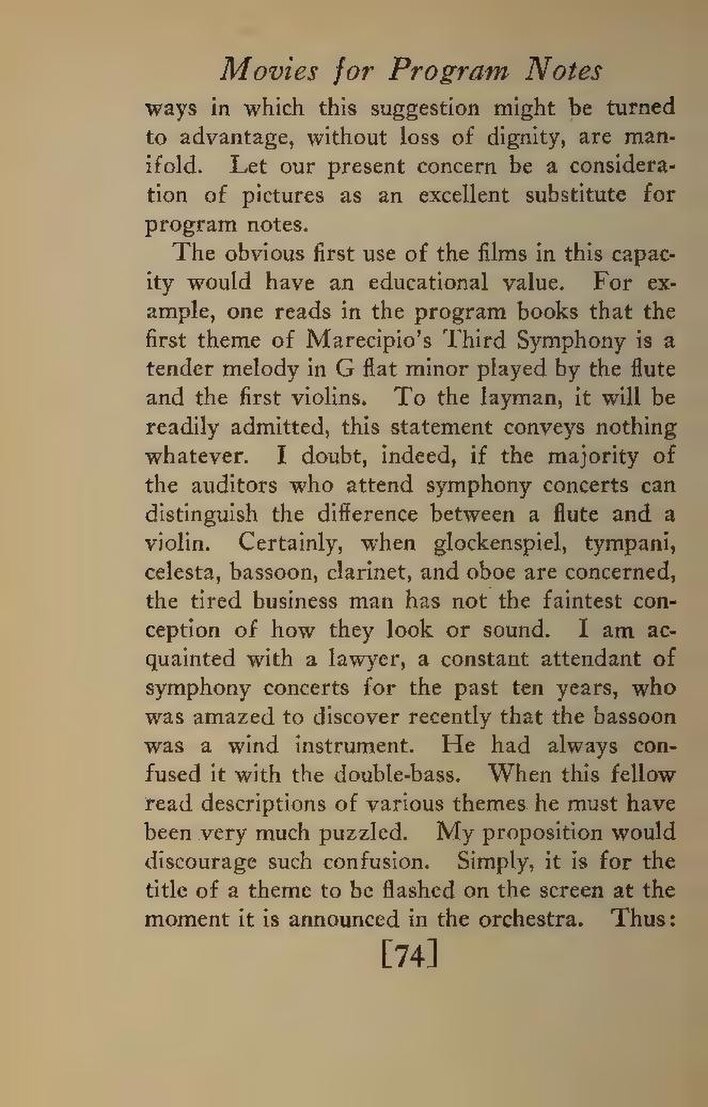ways in which this suggestion might be turned to advantage, without loss of dignity, are manifold. Let our present concern be a consideration of pictures as an excellent substitute for program notes.
The obvious first use of the films in this capacity would have an educational value. For example, one reads in the program books that the first theme of Marecipio's Third Symphony is a tender melody in G flat minor played by the flute and the first violins. To the layman, it will be readily admitted, this statement conveys nothing whatever. I doubt, indeed, if the majority of the auditors who attend symphony concerts can distinguish the difference between a flute and a violin. Certainly, when glockenspiel, tympani, celesta, bassoon, clarinet, and oboe are concerned, the tired business man has not the faintest conception of how they look or sound. I am acquainted with a lawyer, a constant attendant of symphony concerts for the past ten years, who was amazed to discover recently that the bassoon was a wind instrument. He had always confused it with the double-bass. When this fellow read descriptions of various themes he must have been very much puzzled. My proposition would discourage such confusion. Simply, it is for the title of a theme to be flashed on the screen at the moment it is announced in the orchestra. Thus:
